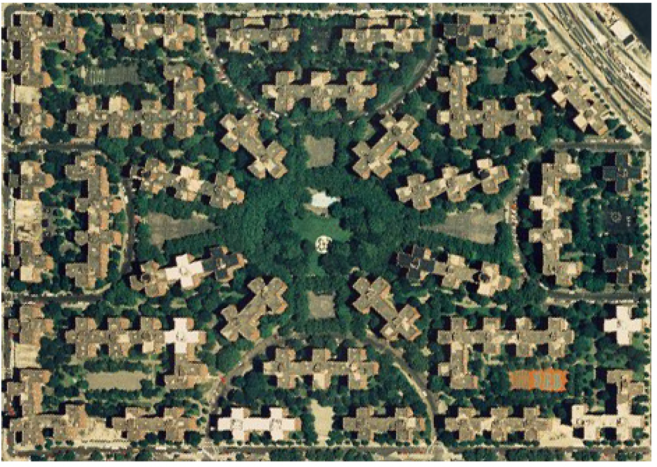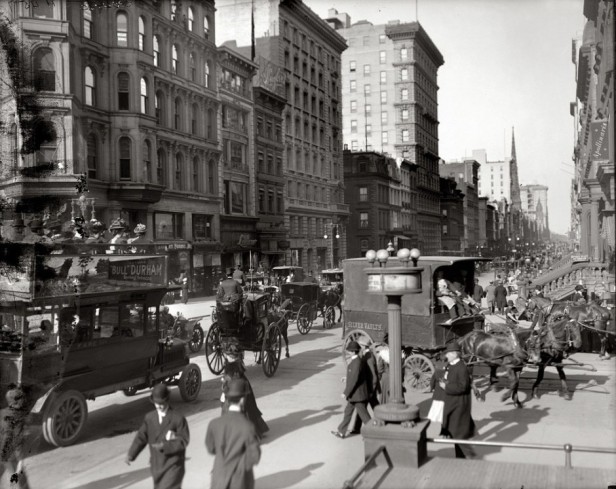There are a lot of words that the various professions associated with city planning use to describe certain characteristics of cities, urban projects, and the like. Unfortunately, some of these are misused in ways that are causing significant problems. One of those words is permeability. In general, we think of something as permeable if it is porous, if it lets things pass through a membrane or other threshold with relative ease.
On the surface this seems like a perfectly logical attribute for a city, permeability, the ability for people to walk with as little obstruction as possible. More places to walk equals more walking, right?
(Note: the opening image is of two versions of the Georgia Tech campus, the first as it could have been if all of the original streets had remained, and the second, as it is today with all the streets gone, with lots of permeability. Interestingly the only reason it is well-populated is because it is full of students walking between classes, otherwise it would be a pedestrian wasteland).
Unfortunately, permeability isn’t an end in itself. The word has to be modified to be relevant. By itself it is meaningless. And further, if it is seen as an end, I would argue that a complete state of permeability isn’t a good thing for a city. As we get to absolute permeability we can look to the Plan Voisin and see that the idea of small, object buildings, placed as far apart as possible to have unimpeded movement, isn’t any way to make a great city.

The goal shouldn’t be to have more permeability for its own sake, rather we need to figure out how much permeability, and what types of permeability, make the most sense for cities. We don’t want more permeability; we want appropriate permeability.
This gets us back to the idea of a membrane. In cities the membrane is the threshold between the public realm and the private realm. In the simplest example it is the façade of the building along the street, with a door, or threshold, through which one passes to move from the public realm to the private. In this case permeability is the degree to which one can pass through, or even see through, the face of the building. But in current discussions, permeability is positioned as the ease with which someone can walk through a block, to get from one point in the city to another. This used to be the job of streets, and with small blocks there was always enough permeability to get throughout the city. And buildings had the job of, even the obligation to, create the space of the street. When buildings get pulled back from the street, and they are broken into small objects, all in the service of letting people meander through permeable blocks, we simply lose the street. Sure, this is more permeable, but it is also far less successful as a strategy for making cities. And taken to its logical conclusion, it isn’t even a city but a suburb, and the permeability isn’t there for pedestrians but for cars. This isn’t conjecture, it is the past seventy years of development in most of the world.

It’s important to understand one’s place in the world and sometimes this requires less permeability. Permeability isn’t necessarily a good word or a good idea and its antonym, impermeable shouldn’t be a bad word or a bad idea. Some of the best buildings (and blocks) in the world are relatively, and even significantly, impermeable.


Is fun to apply this logic to pre-auto settlements. Venice as one of the more entertaining examples, where layers of permeability are based not only on public vs private, but on a variety of transportation modes.
LikeLike
Yes, that is very true!
LikeLike